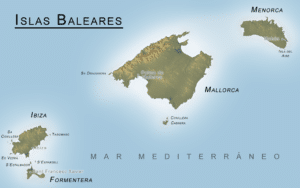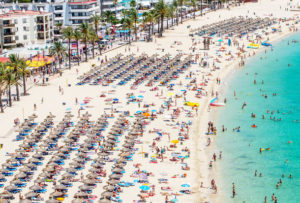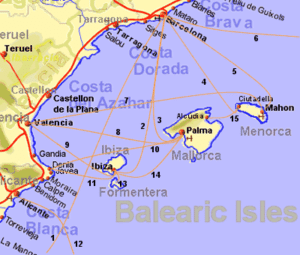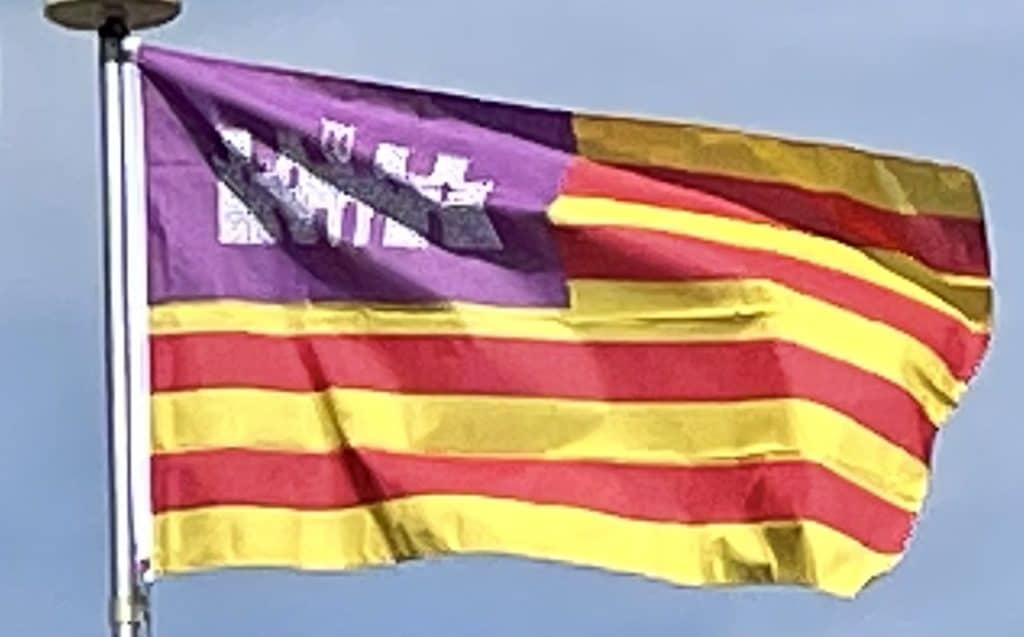
The Balearic Islands were frequently attacked by Ottomans and Barbary pirates from North Africa; Formentera was even temporarily abandoned by its population. In 1514, 1515 and 1521, the coasts of the Balearic Islands and the Spanish mainland were raided by Turkish privateers under the command of the Ottoman admiral, Hayreddin Barbarossa.
The island of Menorca was a British dependency for most of the 18th century as a result of the 1713 Treaty of Utrecht. This treaty—signed by the Kingdom of Great Britain and the Kingdom of Portugal as well as the Kingdom of Spain, to end the conflict caused by the War of the Spanish Succession—gave Gibraltar and Menorca to the Kingdom of Great Britain, Sardinia to Austria (both territories had been part of the Crown of Aragon for more than four centuries), and Sicily to the House of Savoy. In addition, Flanders and other European territories of the Spanish Crown were given to Austria. The island fell to French forces, under Armand de Vignerot du Plessis in June 1756 and was occupied by them for the duration of the Seven Years’ War.
The British re-occupied the island after the war but, with their military forces diverted away by the American War of Independence, it fell to a Franco-Spanish force after a seven-month siege (1781–82). Spain retained it under the Treaty of Paris in 1783. However, during the French Revolutionary Wars, when Spain became an ally of France, it came under French rule.
Menorca was finally returned to Spain by the Treaty of Amiens during the French Revolutionary Wars, following the last British occupation, which lasted from 1798 to 1802. The continued presence of British naval forces, however, meant that the Balearic Islands were never occupied by the French during the Napoleonic Wars.
Geography:
The main islands of the autonomous community are Majorca (Mallorca), Menorca/Minorca (Menorca), Ibiza (Eivissa/Ibiza), and Formentera, all popular tourist destinations. Amongst the minor islands is Cabrera, the location of the Cabrera Archipelago Maritime-Terrestrial National Park.

The islands can be further grouped, with Majorca, Menorca, and Cabrera as the Gymnesian Islands, and Ibiza and Formentera as the Pityusic Islands, also referred to as the Pityuses (or sometimes informally in English as the Pine Islands). Many minor islands or islets are close to the biggest islands, such as Es Conills, Es Vedrà, Sa Conillera, Dragonera, S’Espalmador, S’Espardell, Ses Bledes, Santa Eulària, Plana, Foradada, Tagomago, Na Redona, Colom, L’Aire, etc.
Economy:
The Gross domestic product (GDP) of the autonomous community was 32.5 billion euros in 2018, accounting for 2.7% of Spanish economic output. GDP per capita adjusted for purchasing power was 29,700 euros or 98% of the EU27 average in the same year.

Tourism is the major driver of the economy.
Transportation:
There are approximately 79 ferries between Mallorca and other destinations every week, most of them to mainland Spain.

